“All artists are willing to suffer for their work. But why are so few prepared to learn to draw?” — Banksy, Existencilism.
Oof, AI eh. Never in all my career have I experienced something so dramatically divisive, threatening and talked about; discussed, debated, vilified and worshipped.
I’m not talking about any old artificial intelligence — the inoffensive metallic triage voices that follow a flow chart of responses when you ring your insurance company, for example, or the delightfully clever stuff that knows how you want to fill in the space when you use your ‘content aware’ setting in Photoshop (check this brand new and exciting one here).
I’m talking, of course, about the one that knows how to mimic artists.
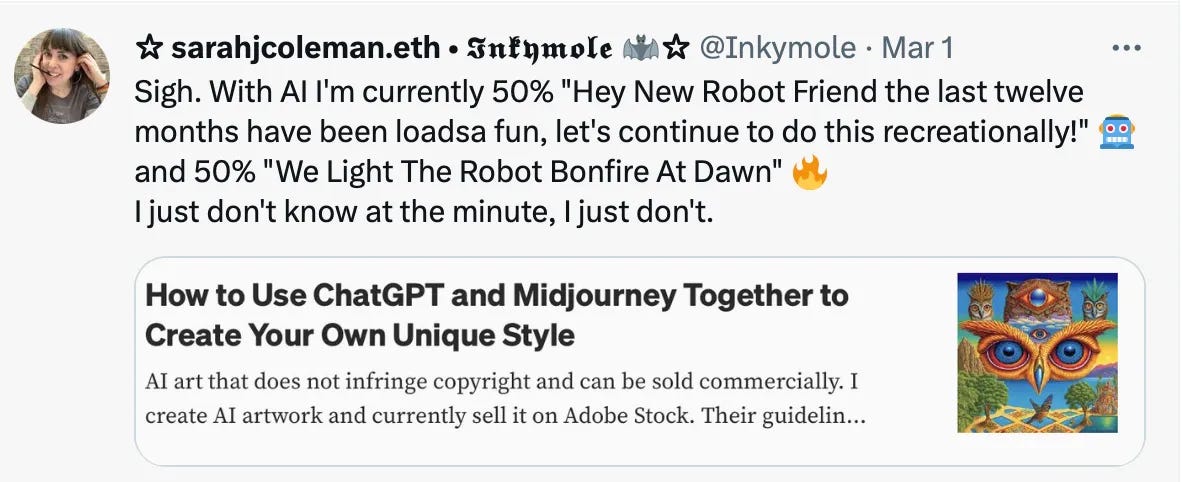
A while back I tweeted this, and 48 hours later sitting in my car on a break from a gleefully visceral IRL primary school day, I found myself thrust into the position of impromptu AI consultant for BBC Radio Leicester and their imminent vox pop feature, an in-person verson of this. At that moment, as I advised on which artists were great examples of building AI creatively into their existing workflow (this man and this woman in particular) and talking about copyright, I realised: if the man-in-the-street is opining about this, it is HERE.
The next day, I was live on air talking about it — specifically the complexities of copyright and a little about whether I personally had been negatively affected by the rapid, and rabid, uptake of AI to make pictures. That was March, and my answer was no. But in the interim weeks, during which I made notes and researched, that answer has turned to yes.
This is another article about AI, but I’m not really wanting to write about ‘it’ — ‘It’ gets enough column inches as it is. As with Chapter I of this series, this is about how I’m experiencing the growth of AI — living through it — as a human artist who’s a month away from having spent thirty whole, full-time years making a joyful, thriving life as someone who creates pictures.
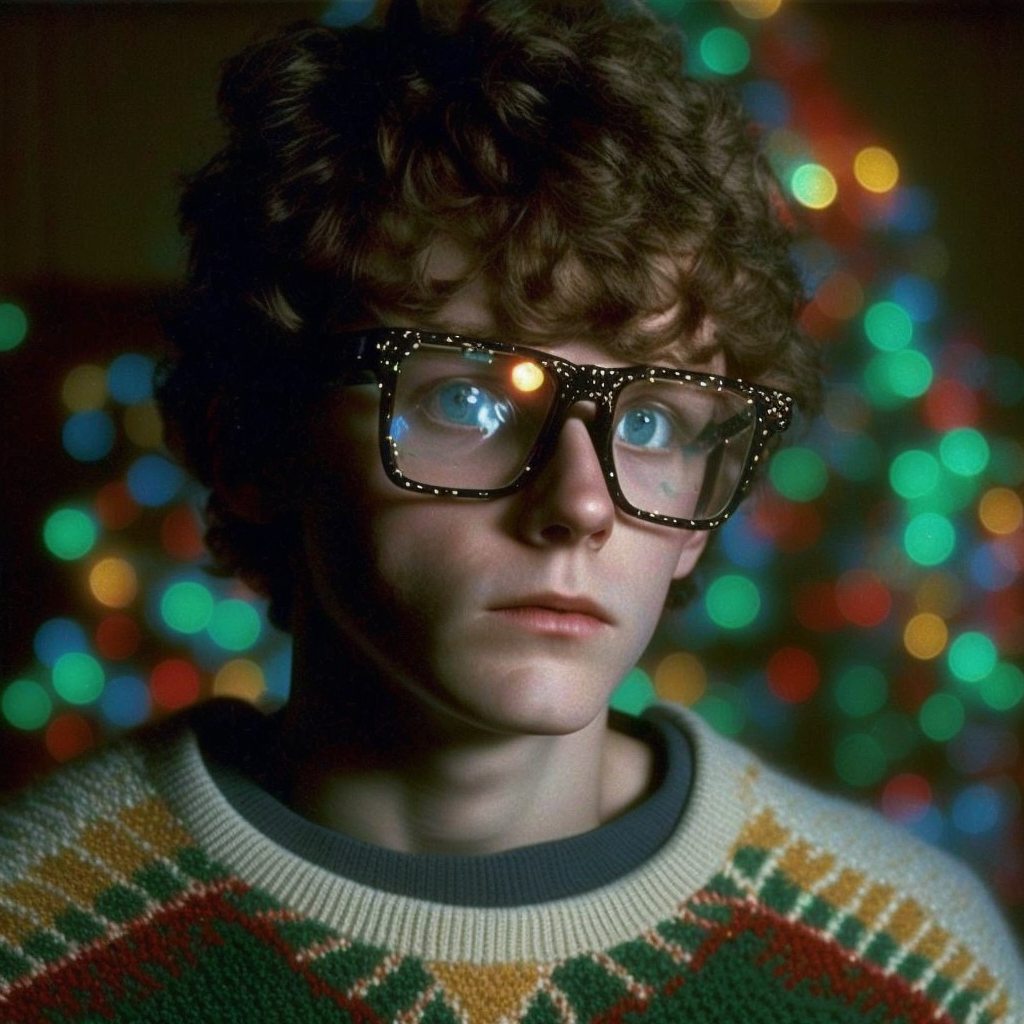
First, since humans find comfort in tribes and a binary (‘scuse the pun) approach, let it be stated: I’m not anti-AI. I’m not anti-future, anti-evolution, nor anti-tech. Never have been; never will be. I’ve used AI. I liked it. So has my Mum. It’s actually been useful: it wouldn’t have been me setting fire to any of those looms. Here’s an AI-generated Luddite. He has five fingers, but he’s actually quite amazing isn't he? As is his machine.
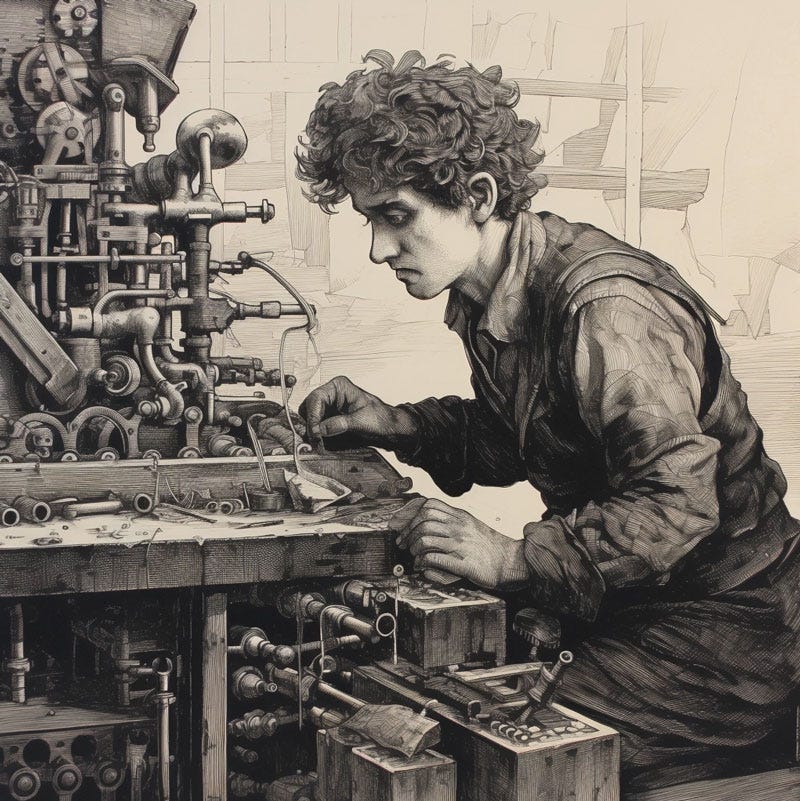
But where we seem to have to got to very suddenly is a scenario which sees professional artists facing an enforced exit, or partial departure, from their vocations. It’s a terribly-timed soup of circumstances. There’s the combination of post-pandemic changes to the business (senior or experienced art buyers and creatives taking early retirement or switching streams, replaced with with individuals less experienced and less au fait with commissioning artwork, if replaced at all), visceral shifts in the fiscal landscape, budgets plummeting, a growth in ‘race to the bottom’ offerings such as Fiverr, the free/cheapness of the likes of Canva, corporate clients taking work in-house, triple-bidding, ghosting, brands producing work themselves rather than using agencies. (As you might be able to tell, I have been researching what exactly the hell is going on for a couple of years).
And into this landscape waded AI, itself devoid of personality but dragging with it shocking levels of hitherto unrevealed entitlement and resentment.
I never in a gazillion light years envisaged my third decade in business. All I ever wanted to do was ‘draw for a living’, do it well, and do it consistently. I wanted to be in demand, but I didn’t think about getting rich. I definitely never wanted to be ‘famous’. I did want to be able to do my job indefinitely, until I choose not to. Standing there at 23 and being told I’d be doing this 30 years later would have taken my breath away — I’d have felt like the most privileged girl in the world.
But here’s what seems to be a revelatory word in the story of AI — privilege. The exposed vein of resentment toward artists suggests that ‘we’ (everyone is very ‘othered’ in AI-fan conversations) are in the positions or jobs that we are through privilege or deceit, rather than hard work, consistency and persistence. What happened to the diehard notion of the starving artist being the only valid or authentic one? (which itself is nonsense).
I joined the Midjourney FB page a couple of months ago just to see what other people were doing. As I’ve said in the previous article, I play with Midjourney myself. Some of what’s posted in the group is a bit dull, but some of it is exceptionally eye-catching, arresting, even. Some of its users are utilising the new, cheap power at their fingertips to finally make their kinks r*e*a*l. A lot of it is just funny, people making the kinds of visual mash-ups and remixes we saw in the 90s and early noughties with sound, the likes of Richard X, Cassette Boy, DJ Rubbish. I feel obligated to be in the group — not exactly ‘keep your enemies closer’, but something along those lines—despite it causing me to swing nauseatedly between ‘omg that’s beautiful’ and ‘I haven’t got enough Ugh for that’.
Unfortunately, comment after sour comment reveals among users a feeling that, somehow, ‘we’ had been keeping creativity all to ourselves; we’d been gatekeeping all these…erm, millennia.
Check these real quotes from ‘professional prompters’. With artists on one side pitched as greedy, secretive hoarders of a mysterious dark skill, and AI users on the other viewed as vacant, jealous prompt-monkeys, the division and schoolyard name-calling is real, and utterly pathetic — bordering, at times, on a weirdly rapey ‘they asked for it’ kind of vibe:




This dovetails with an oft-repeated script seen in mine and my colleagues’ online dealings with fans and would-be professional artists. It goes something like this.
“Hey *artist’s forename*! I love your work. What app or filters do I use to get my work to look like that? Any short-cuts or tricks?”
Another example:
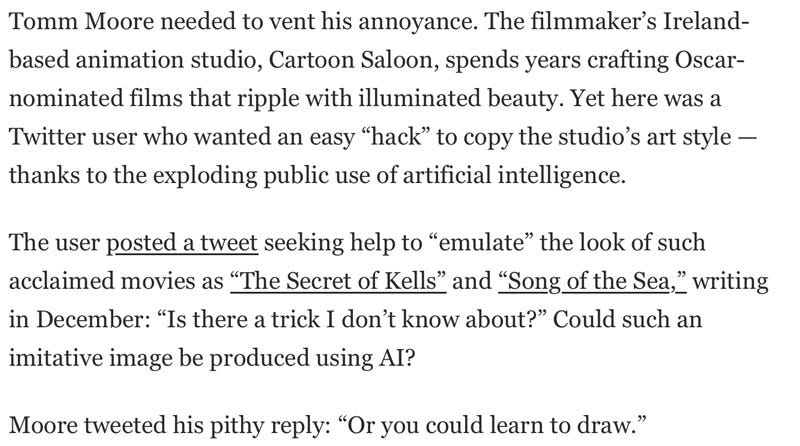
The answer is usually a little less blunt than this — kind, patient, firm, and something along the lines of “there is no app, or filter, or shortcut, this work evolved through many years of practise, experience, trial and error, and if you go through the same process, you’ll develop your own thing too.” This fella is a great example .
Generally it seems that people don’t like that answer, or at the very least, don’t believe it. The question itself seems to suggest that hidden in the answer is a lofty smugness or palm outstretched saying “you can’t come in” when, in fact, the answer given is the opposite.
People calling themselves artists and getting cross about artists being paid appropriately for their years of training, practice and accrued expertise has parallels with me on Gran Turismo driving Monaco in the wet every weekend for a year, getting really good at it and then whining that George Russell’s getting £5m a year and where’s mine?
Well; let’s see. I might not be brilliant at Gran Turismo, but I do play it and can get around tracks without crashing. More importantly, I can get around real tracks without crashing. My first ever track day was at the infamous Nürburgringin Germany - akin to your first ever karate class being a black belt one and then working your way back down — before driving at Mallory, Silverstone, Brands Hatch and Donington. The thing about driving on track is a) there are so many variables, and b), it’s a tough, visceral, physically-demanding experience. You need to have the car set up right; you need to have the right tyres set to the correct pressures for the condidions. Is it raining or dry? Do you need to put slicks on? Is the oil topped up? Have you had enough to drink but not so much that you’ll be distracted by your bladder? Have you eaten enough to maintain focus? Is your helmet in good nick? Have you driven this track before? And are you taking a passenger?
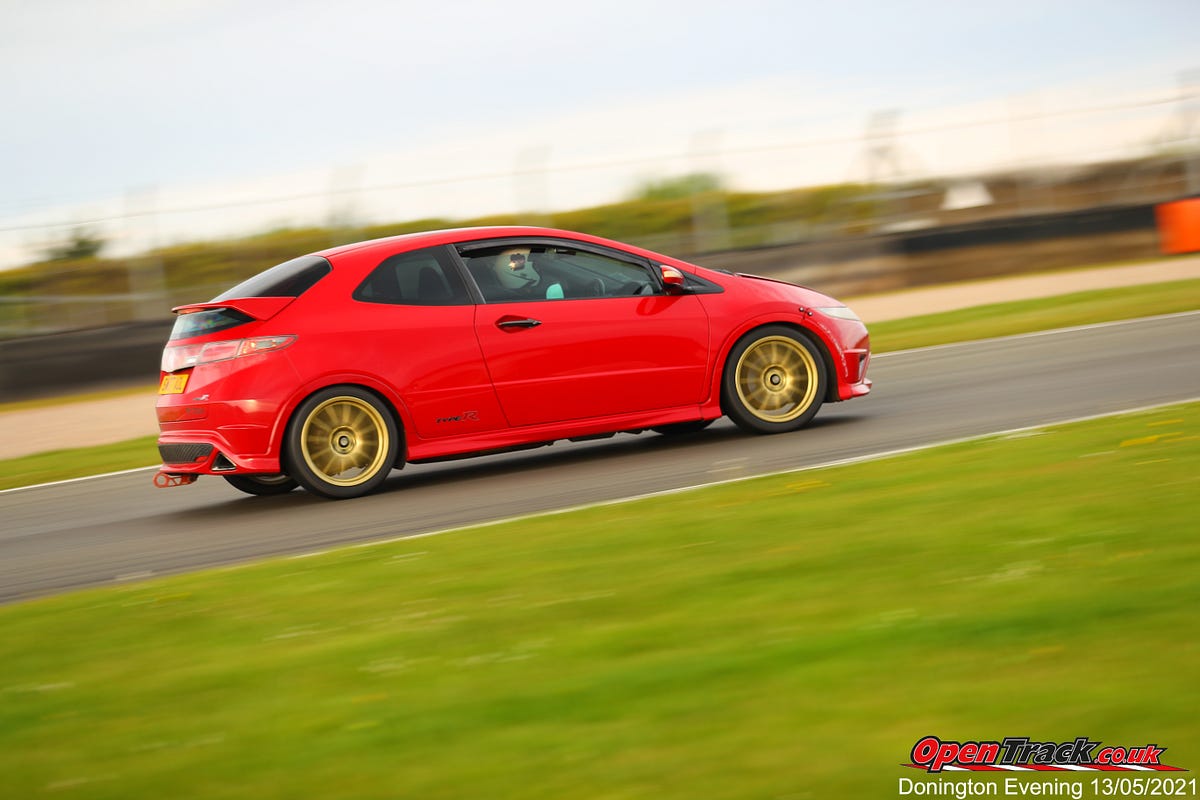
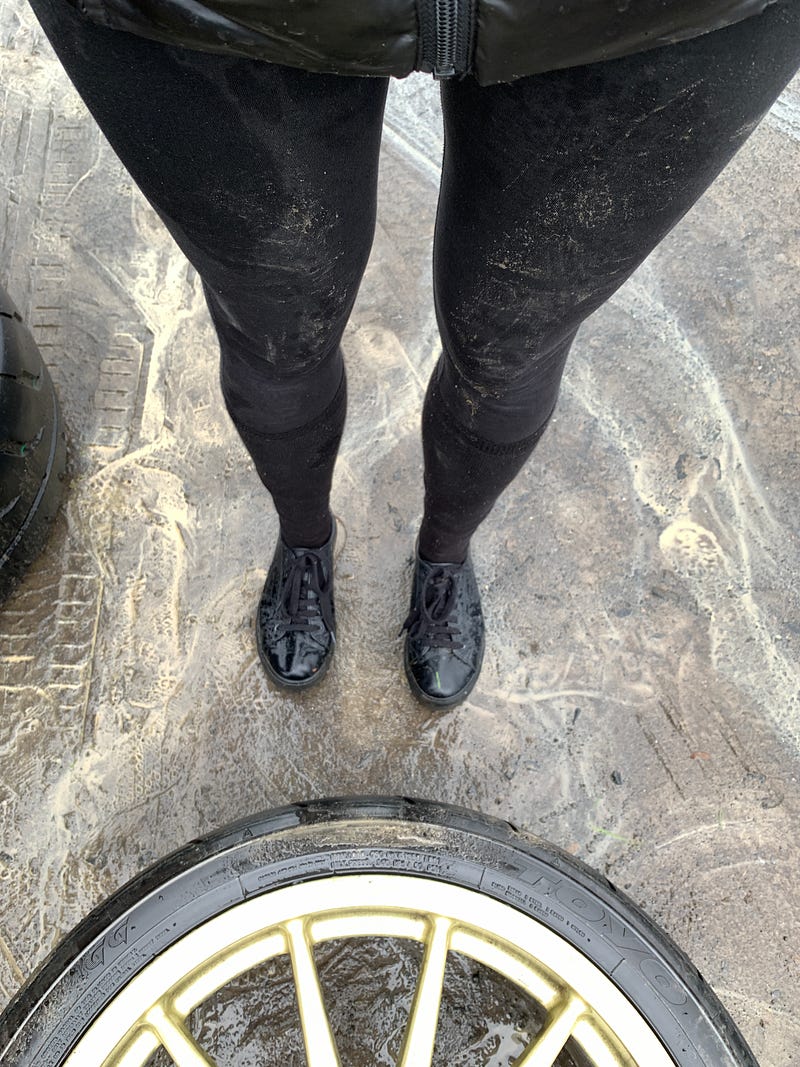
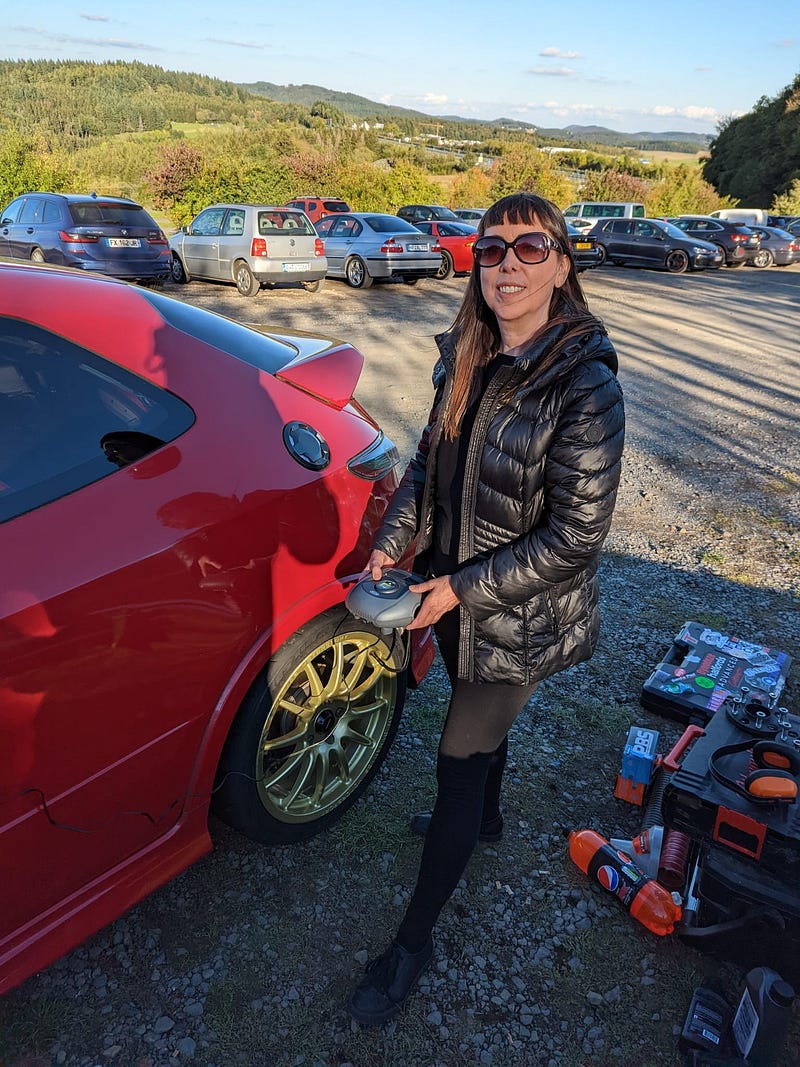
Driving on track subjects both you and the car to incredible G forces, tyre squeal, a screaming engine, unburnt hydrocarbons, not to mention the nervous exhilaration. Intuition, fast reactions, knowing the car and building experience are pivotal. It’s challenging for the body. But I can do it, and I can confirm that driving a super-realistic but synthetic car on screen is NOT the same, in the way that making a piece of art with a keyboard is not the same as making art with the hands/body (and for the last time I’ll state that I include digital painting in that): it’s completely free of risk and consequence.
So I still won’t ever get a five million a year driving contract, because a professional F1 driver’s contract pays him not only for his driving but for experience, total professionalism, commitment to physical fitness and diet, incalculable pressure, high risk of death of injury, discretion, brand awareness, interaction with sponsorship deals, PR savvy and that’s just the start. So in addressing the resentment shown by over fees paid to artists, when a client pays for a professional artist, they’re also paying for not only the art but all the rest of what makes them professional, and aside from the risk of injury and death there are many parallels in the qualities above.
Back in the picture-making world, the app/shortcut/filter to make art that looks as good as ‘the real thing’ is here, and virtually free.
You never even need to have picked up a pencil, digital or otherwise, to make a nice picture. You just need to tell the machine what you want. And yes, there’s some practice-makes-perfect in knowing how to ask, and precisely what to ask for, but that’s it. It’s art direction, without the artist (see examples of significant exceptions above) and with a vapourised budget.
But you don’t even need to go to that much trouble. I went into my MJ Discord and bashed my keyboard for three seconds with my eyes closed, producing this prompt:
kfsygrfueyg87560874jk-89374nsdvffytesfhndsdf — 33hdhdnc5x=kjehbfserjhaefb)(11erhbfb775hhsdjfvsf-sdfjsdf1jdfhbggdfjh
and got these perfectly pleasant pictures:
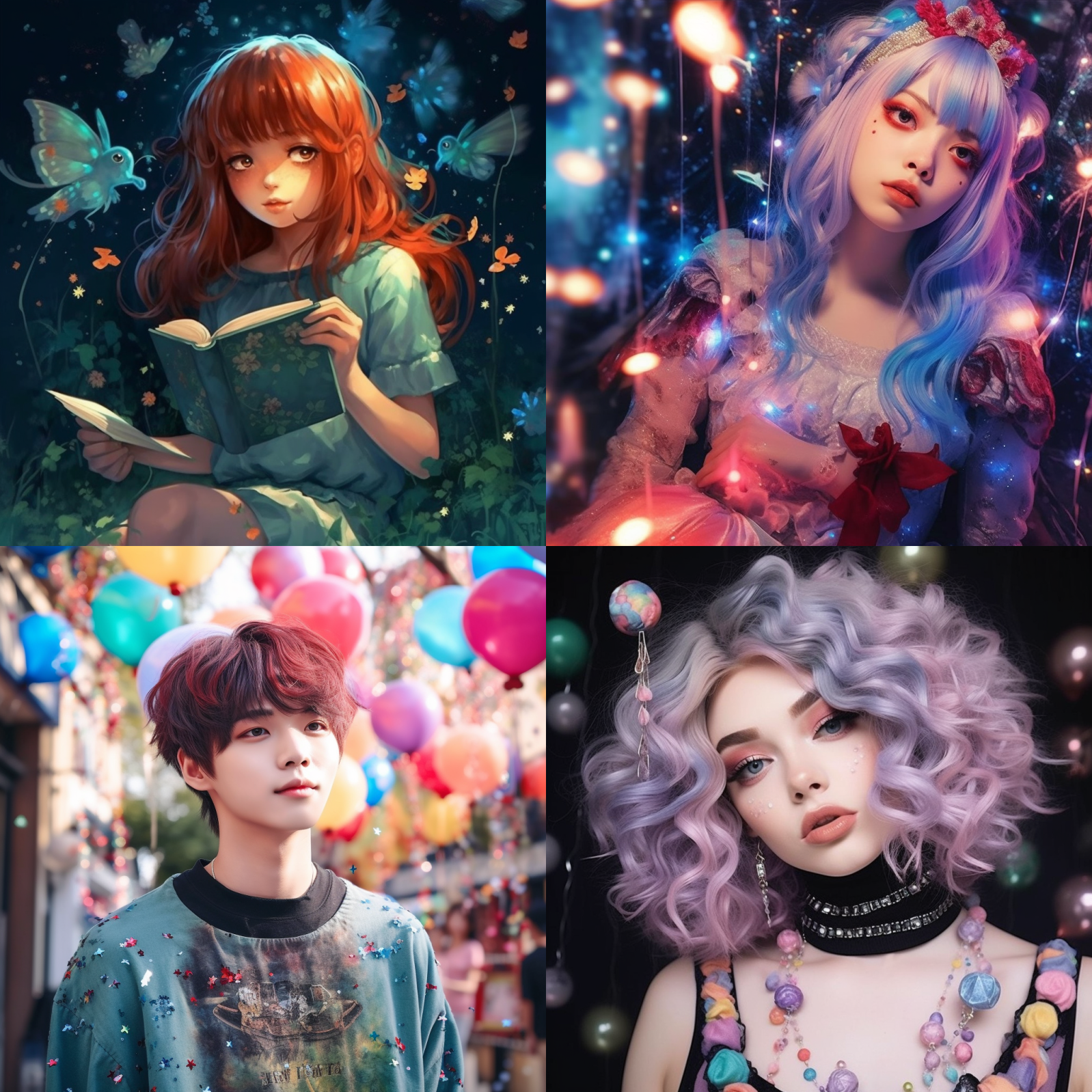
Reminds me of the scientific theory that if you got a bunch of monkeys to hit a typewriter for long enough, you’d eventually get some Shakespeare.
(And you can go ahead and copy that prompt to see what MJ makes for you, because nothing that’s generated by Midjourney, Stable Diffusion or OpenAI is currently subject to copyright, nor are prompts. More on that later.)
I read this morning, while trying to finish this article, that “prompting is the new painting” — the rapid turnover of gems like this is one of the reasons this article’s taken so long to finish, by the way; always something new to add to the ‘finished thing’ (a bit like a piece of work you’re really loving making).
“But you won’t be put out of work by AI itself”, the boss of my agency was told. “You’ll be put out of work by someone using AI”.
Of course. Makes sense, albeit alarming. A rapid succession of incidents over the last couple of months show this is not a theory. A client of mine, Bloomsbury, who I’ve thoroughly enjoyed working with on many covers, used an AI image of a wolf on the paperback edition of a bestselling author’s novel. They claimed not to be aware that it was AI, but the image was spotted on Adobe’s stock site for $79.99, clearly marked AI-generated. I retweeted this, pondering my own dramatic and sudden reduction in book cover work, and it’s been my most RT’d, liked and commented-on tweet — it clearly struck a nerve. I truly, but perhaps naïvely, was surprised at Bloomsbury.
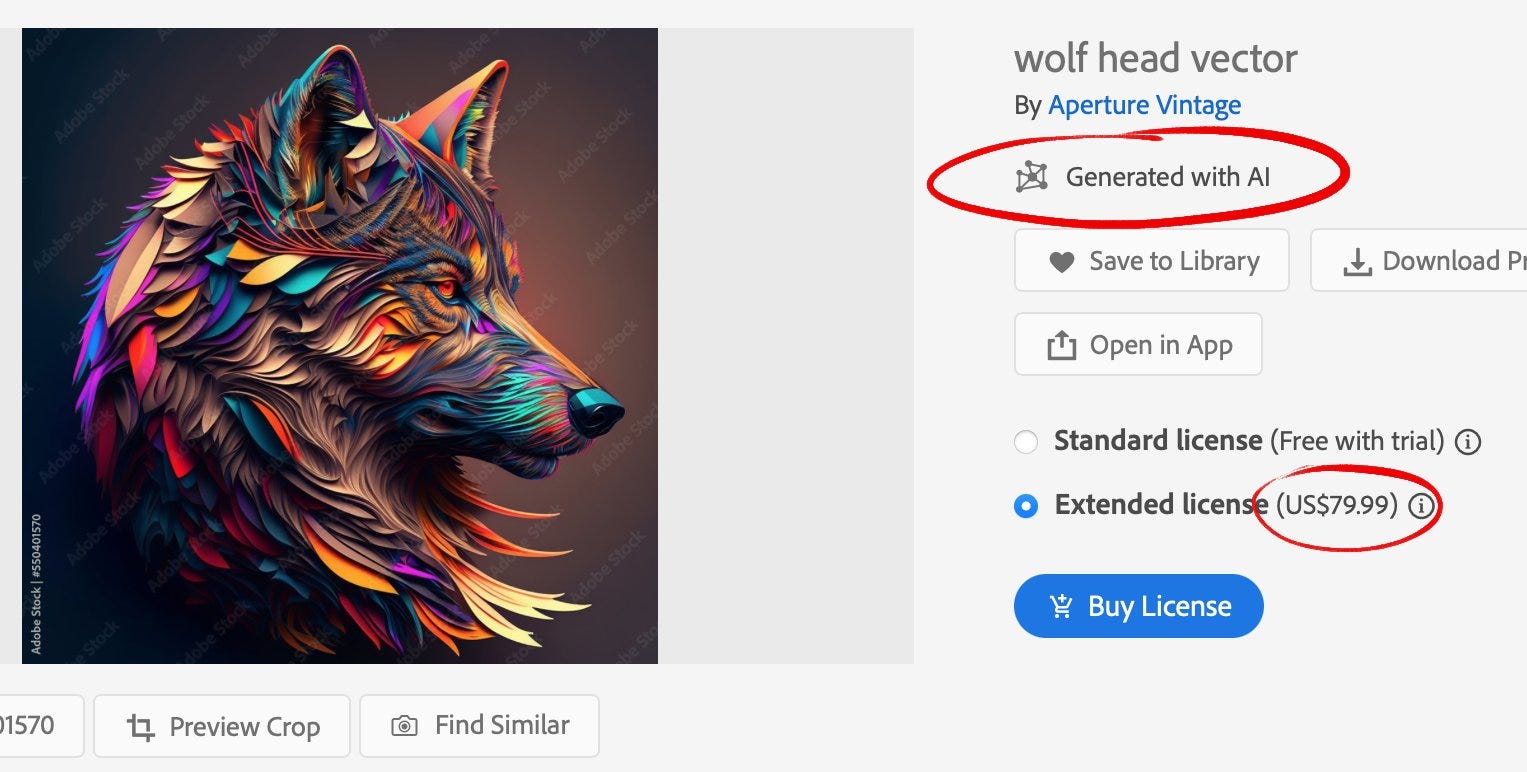
Before this, in another Tweetpocalypse, Bradford Literary Festival, whose lineup included events with human illustrators, were found to have deployed AI-generated pictures of a girl with three feet for their promotion (now replaced). It wasn’t JUST that it was so blatantly, crudely AI-generated; it was that the festival claimed a human illustrator had worked with it afterwards — then defended their decision-making:
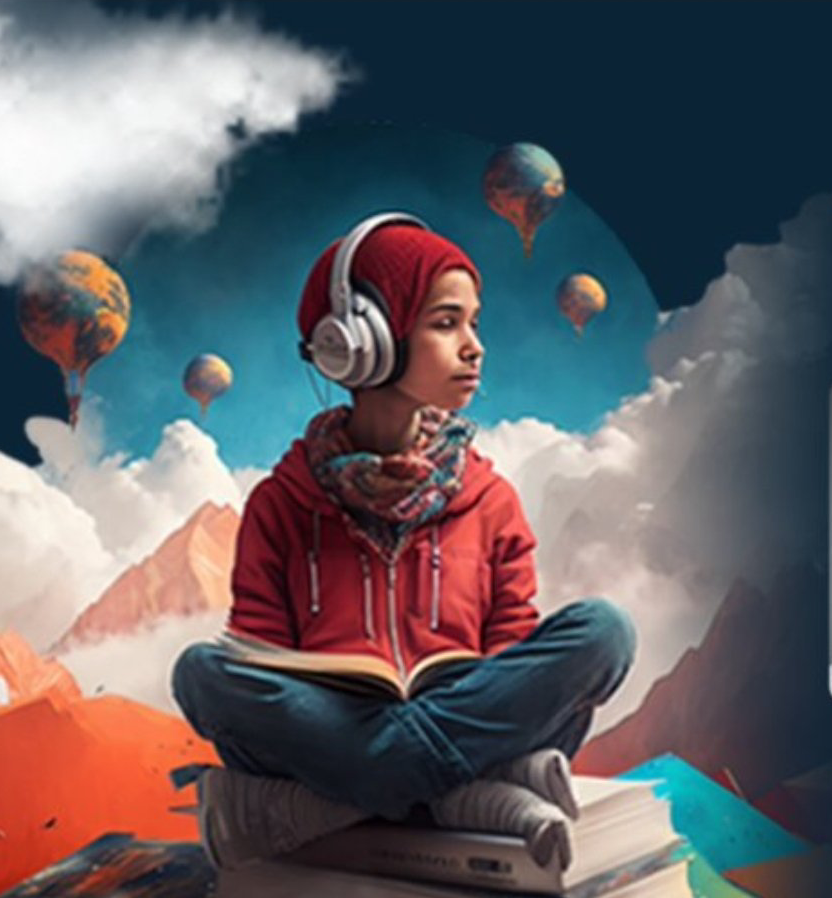
Then Google’s Geoffrey Hinton stepped down, and since we were speaking of racing drivers, a German magazine drew heat for this interview ‘with’ Michael Schumacher, and an AI-generated picture won the Sony World Photography Awards. There were a few weeks there where it felt like we were living in a blizzard of AI stories, and I still wasn’t convinced AI was actually having a negative impact on my work.
Until I saw that it has to be. A fellow illustrator sent the most apt response to my second-most-popular tweet ever, about the ‘inexplicable’ fall-off of my previously plentiful book work: ‘What a time to be alive’.
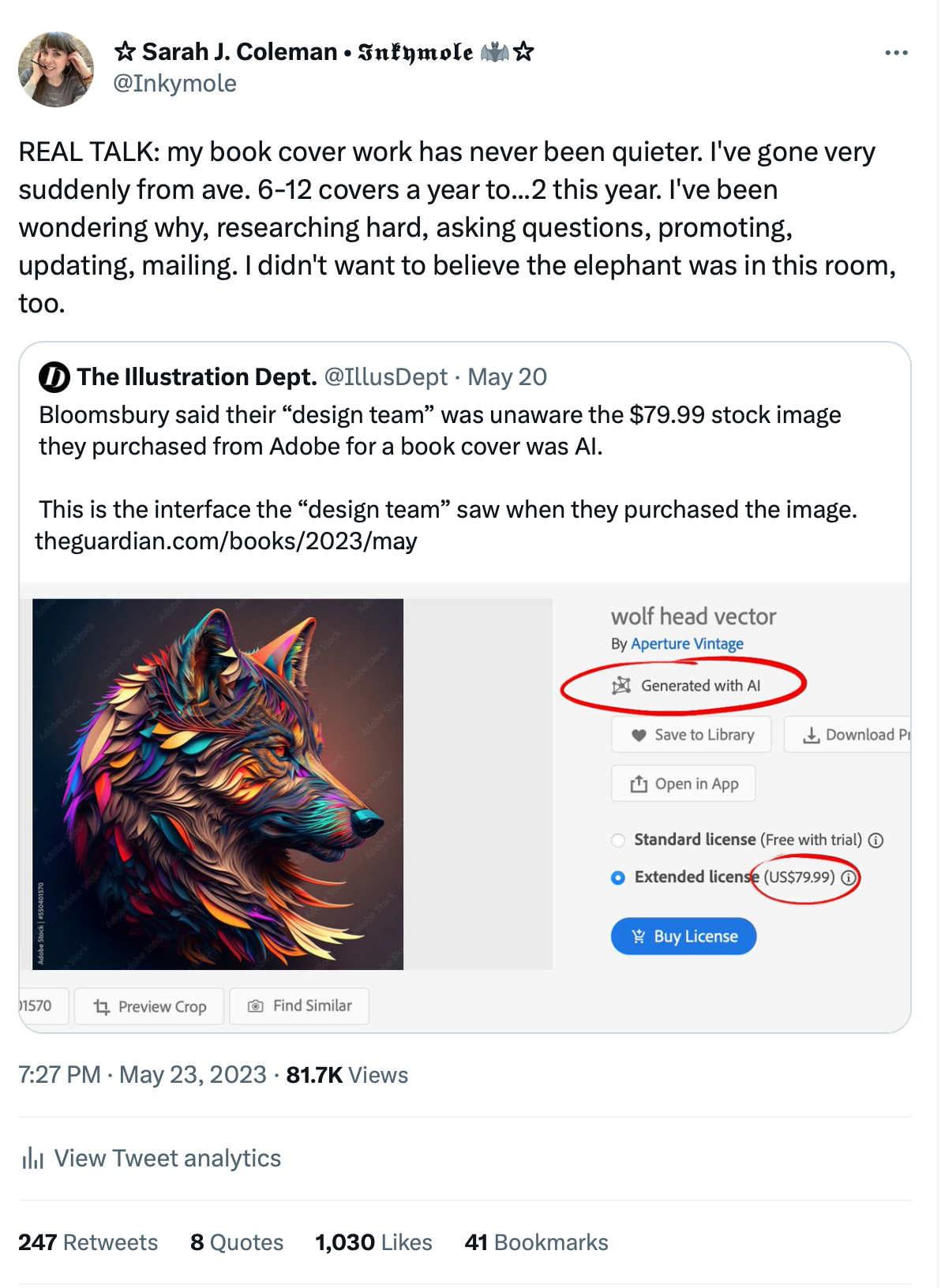

No comments:
Post a Comment